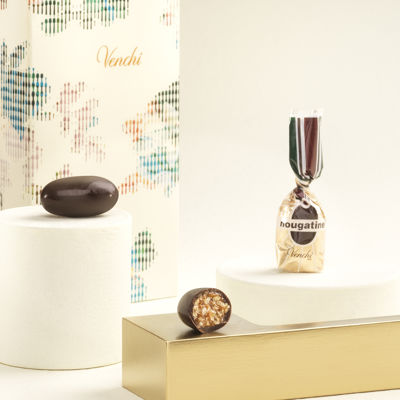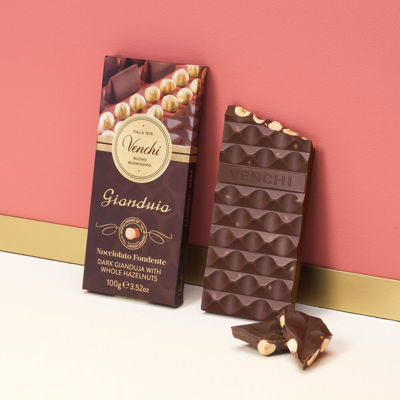
Gelato vs Ice Cream vs Sherbet vs Sorbet vs Frozen Yogurt: What Are The Differences?
Icy desserts are everyone's favourites. But when you are in the mood for something sweet after dinner, what do you reach for? Is it ice cream or gelato? Or both!
While gelato and ice cream have more in common than a bowl of pasta, they do not mean the same thing in the culinary world. Throw in the fact that 'gelato' is the Italian word for ice cream, and confusion can strike big time.
Both desserts are made from dairy and sugar and are usually drizzled with fresh fruit or chocolate syrup. But the difference between gelato and ice cream is that ice cream is creamier and fattier. Gelato is churned slowly to deliver a smoother texture, celebrating fresh milk and sophisticated flavours.
In this blog, we will clear up the differences between gelato, ice cream, frozen yogurt, sherbet, and sorbet.
What Is Frozen Yogurt?
Is frozen yogurt what happens when you put yogurt in the freezer? Almost!
You can whip up homemade frozen yogurt at home, but it is not that easy. You will need to follow a recipe, not just put regular yogurt in the freezer. Plus, chances are your DIY frozen yogurt will not taste the same as the ones you can order from a fro-yo place. These tempt our appetites with their smooth texture and sugary taste.
Frozen yogurt is made from milk, yogurt cultures, and sugar. Extra flavours can be infused into the yogurt, such as cocoa, vanilla, fruits, and sweeteners, to excite our taste buds. It is an icy treat that was invented in the 1970s as an alternative to ice cream.
Ice Cream vs Frozen Yogurt: How They Are Different
Just from the taste alone, we know that ice cream and frozen yogurt are not identical. Both recipes call for dairy and sugar, but the difference lies in the type of dairy.
The dairy in ice cream comes from cream, while frozen yogurt uses cultured milk. The result is that ice cream tends to have a higher fat content, while frozen yogurt contains more sugar to hide its tangier taste.
The way frozen yogurt feels in the mouth is different from ice cream. Ice cream is fluffier and silkier, as it has plenty of air churned into it during the production process.
Is ice cream gluten free? If it follows the classic recipe, then it should be. But pay attention. Some brands sneak other ingredients into their products.
Sherbet vs Sorbet: Are They The Same Thing?
Sorbet and sherbet both deliver zingy, fruity flavours, but they are not identical. We will look at their differences and similarities in more detail below.
What Is Sherbet?
Sherbet is prepared in an analogous way to sorbet but includes subtle touches of dairy, usually milk, cream, or buttercream. The ratio of dairy in sherbet is much less than in ice cream or gelato, while sorbet is dairy-free.
Do you love a silky texture? The extra dairy in sherbet and the added fat creates a smoother texture that tastes luxurious. The higher water content of sorbet makes it icier and more refreshing.
Sorbet still has an understated creaminess that allows the fruity taste to be the star. It is usually prepared with punchy fruit flavours, such as lemon, lime, grapefruit, and pineapple.
What Is Sorbet?
Refreshing, cooling, and fruity, sorbet is a go-to Summertime dessert.
What gives this icy treat its iconic flavour? Its ingredients. Sorbet is made only from ice, sugar syrup, and usually fruit puree or fruit juice, making it a cool refreshment.
Sorbet is entirely dairy-free and, hence, suitable for vegans. The lower calories of sorbet are also a welcome positive.
Dairy percentage: Sorbet contains no dairy, which makes it a great frozen dessert for lactose intolerant people and means that it is exceptionally low in fat.
Texture: A true thirst-quencher, sorbet's lack of cream and fat makes it one of the lightest, iciest, and most delicate frozen treats. Professionally made sorbets feature an understated smoothness from the powerful churning process.
Taste: Top-notch sorbets deliver a burst of vibrant fruit with every scoop. This frozen dessert is mostly linked with fruit-based flavours, but there are also gourmet variations such as the chocolate sorbet. Yet you can play around with adding liqueurs or fresh herbs to the sorbet to ramp up the intensity.
How To Serve: To allow the bright flavours of sorbet to shine through, it is best to serve it at warmer temperatures, between 10 to 20F. Serve it on its own as a crowd-pleasing dessert. Or let it wow guests as a palette cleanser and serve it in-between courses at a dinner party.
Venchi Chocolate Best Sellers
Gelato vs Ice Cream vs Sorbet
Picture this. You have just finished an outdoor dinner, now what is next on the menu? Ice cream cocktail drinks would be a delicious ending to a perfect evening. The options are endless. Both gelato, ice cream and sorbet are mouth-watering treats, yet what are their differences?
Dairy percentage: When we think of gelato, its creaminess comes to mind thanks to the dairy. Gelato's fat content is around 4 to 9%, much less than ice cream but more than sorbet.
Texture: Gelato has a velvety, melt-in-your-mouth texture. It is much denser and thicker than sorbet because of the dairy and the slower churning process, making it less airy.
Taste: Gelato is famous for its intense flavours, like Pistachio and Gianduja, which are much more sophisticated than ice cream. Fruity and juicy flavours are sorbet's signatures.
How to serve: So that gelato stays creamy and not too hard, it should be served at warmer temperatures, around -10C. Ice cream likes chillier conditions, stored at -25C.















